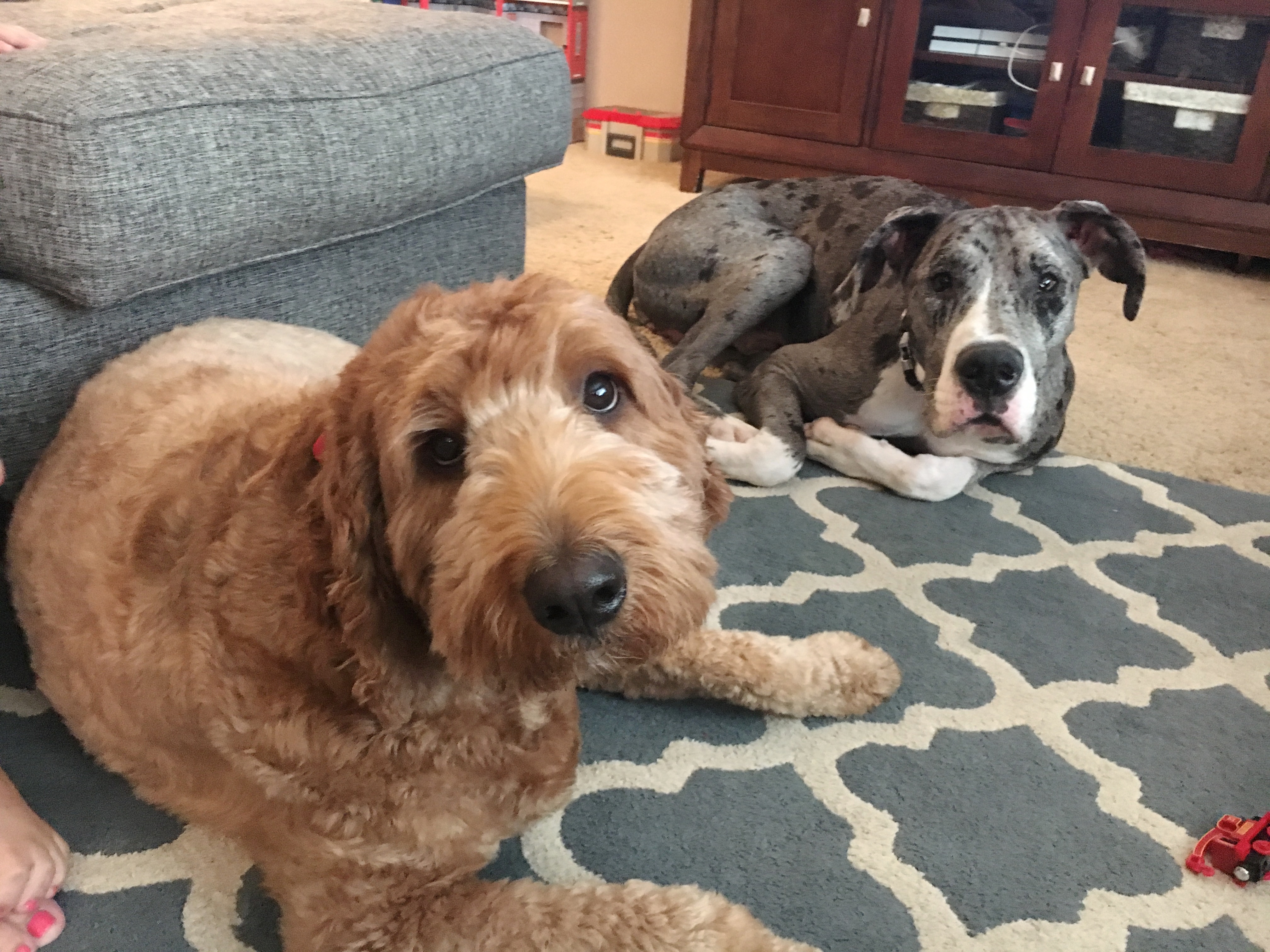How to Teach Dogs to Respect Space By Training the to Stay Out of the Kitchen
By: David Codr
Published Date: August 17, 2017
Jagger (left) is a three-year-old Goldendoodle who lives in Omaha with one-year-old Great Dane Zeppelin. Their guardians set up this dog behavior training session to work primarily with Zepplin who doesnt always listen, is an excited dog, doesn’t respect boundaries, jumps up and steals food via counter surfing.
The day of the session, Zeppelin was recovering from surgery having his stomach tacked (Prevents bloat) and was a little off his game; more subdued than normal.
Despite recovering, Zeppelin had no problem invading people’s personal space. For any dog this can be an issue, but when you have a giant breed, not respecting personal space is a big problem. As a dog behaviorist, Im always encouraged when people with giant breeds reach out for help as its crucial the dog listens on its own, not through force or pain causing tools like prong collars, etc. I abhor these tools as they have no place with the modern positive dog training methods and approach we subscribe to.
I showed the guardians how to use a set of Escalating Consequences I developed a few years ago to disagree with unwanted behaviors like failing to respect people’s space. The humans can also use them to teach the dogs to stay behind invisible lines. In the video below I show the guardians how to use this dog training approach to teach the dogs to stay out of the kitchen during dinner time.
Both dogs responded really quickly to the new invisible boundary I established outside of the kitchen. Because the Escalating Consequences were modeled after actual dog communication methods, most dogs pick it up right away.
It will be important for the humans to recreate a dinner eating exercise just like I did and help the dogs practice respecting a boundary daily for the next week or two before this becomes a new behavior for the dogs. The best time to do this will be right before an actual meal. This allows the dogs to practice the expected behavior while the humans are not distracted by an actual meal.
We finished up the session by shooting a roadmap to success video filled with a number of the positive dog training tips I shared with the clients during the session.
Categorized in: Dog Behavior


